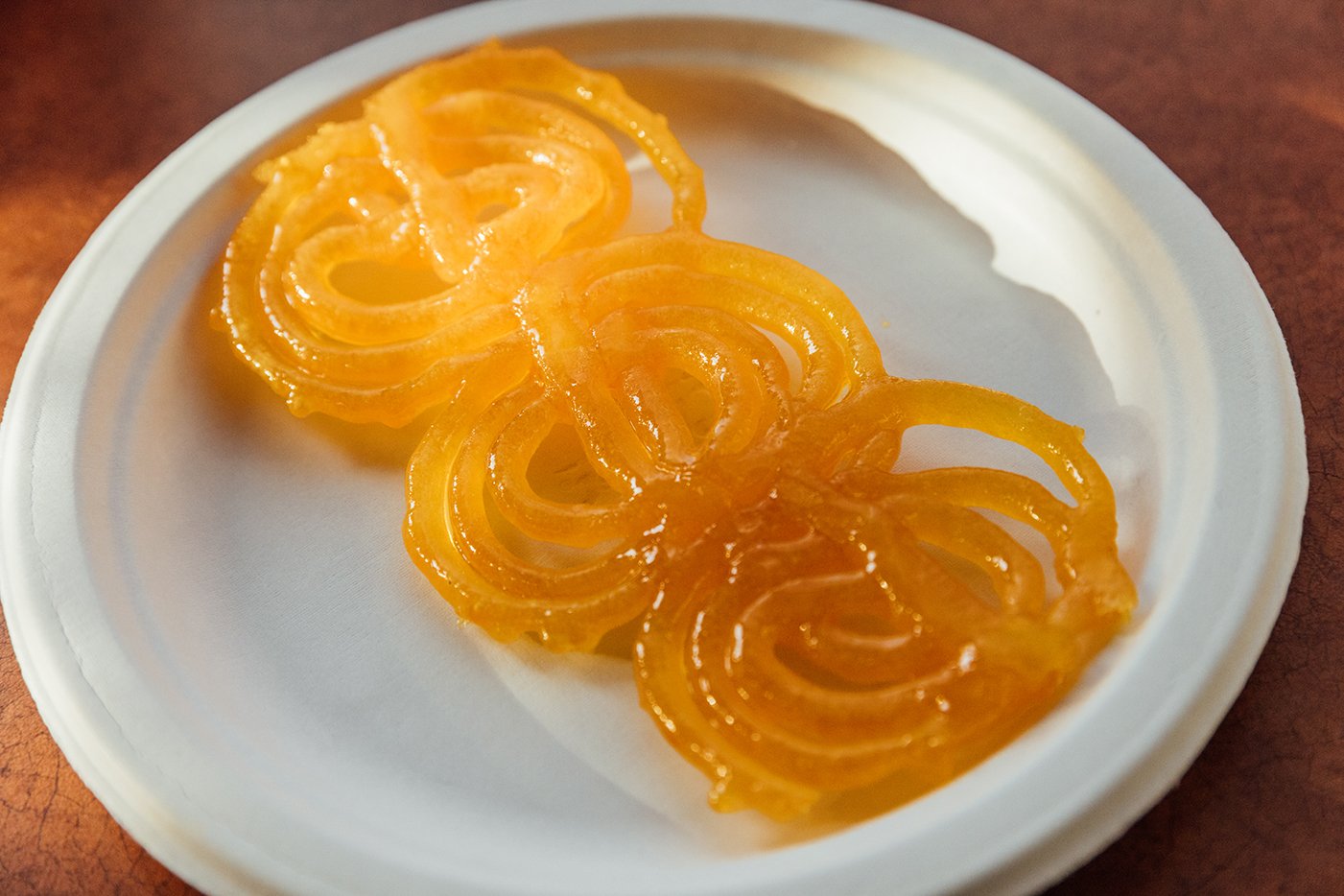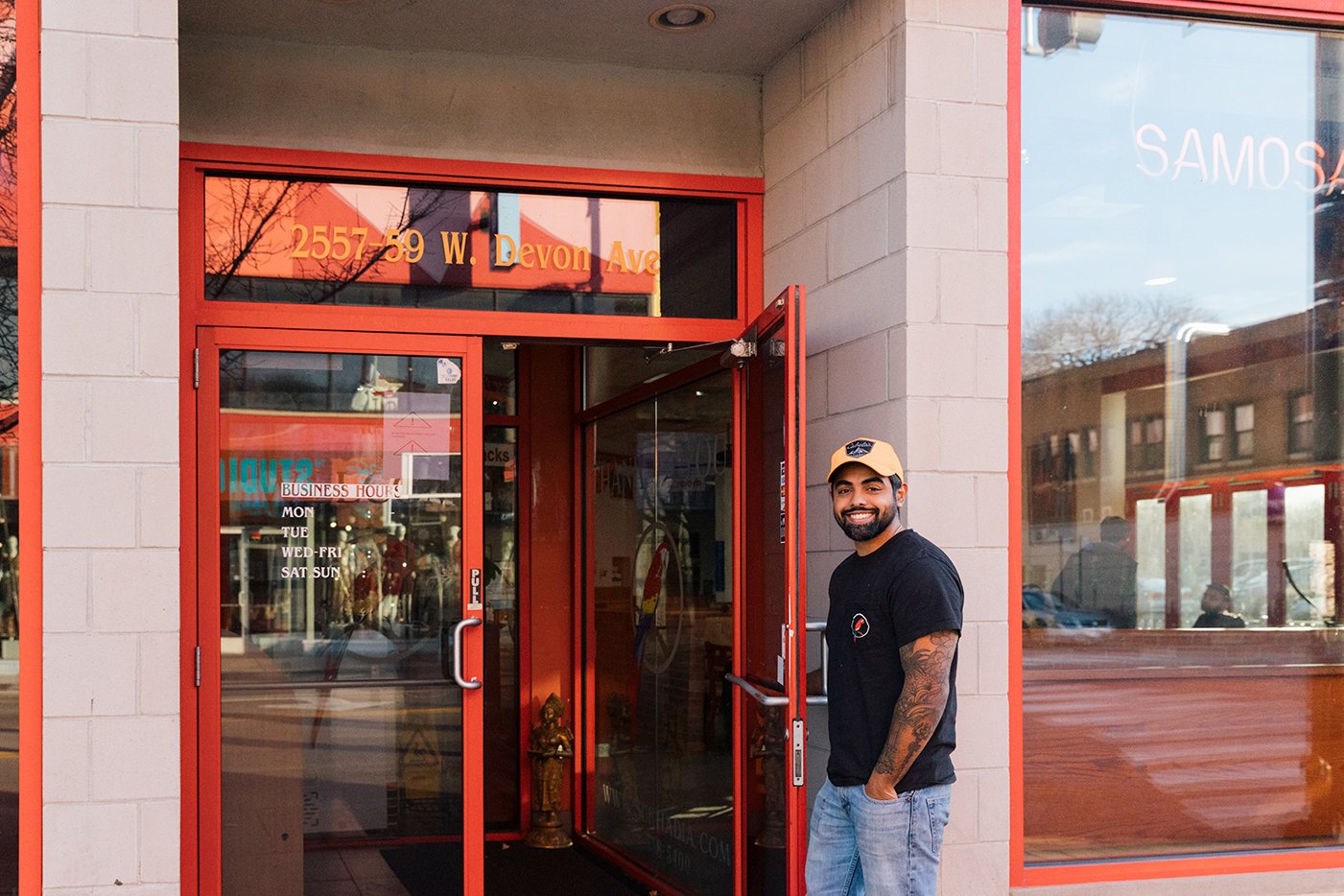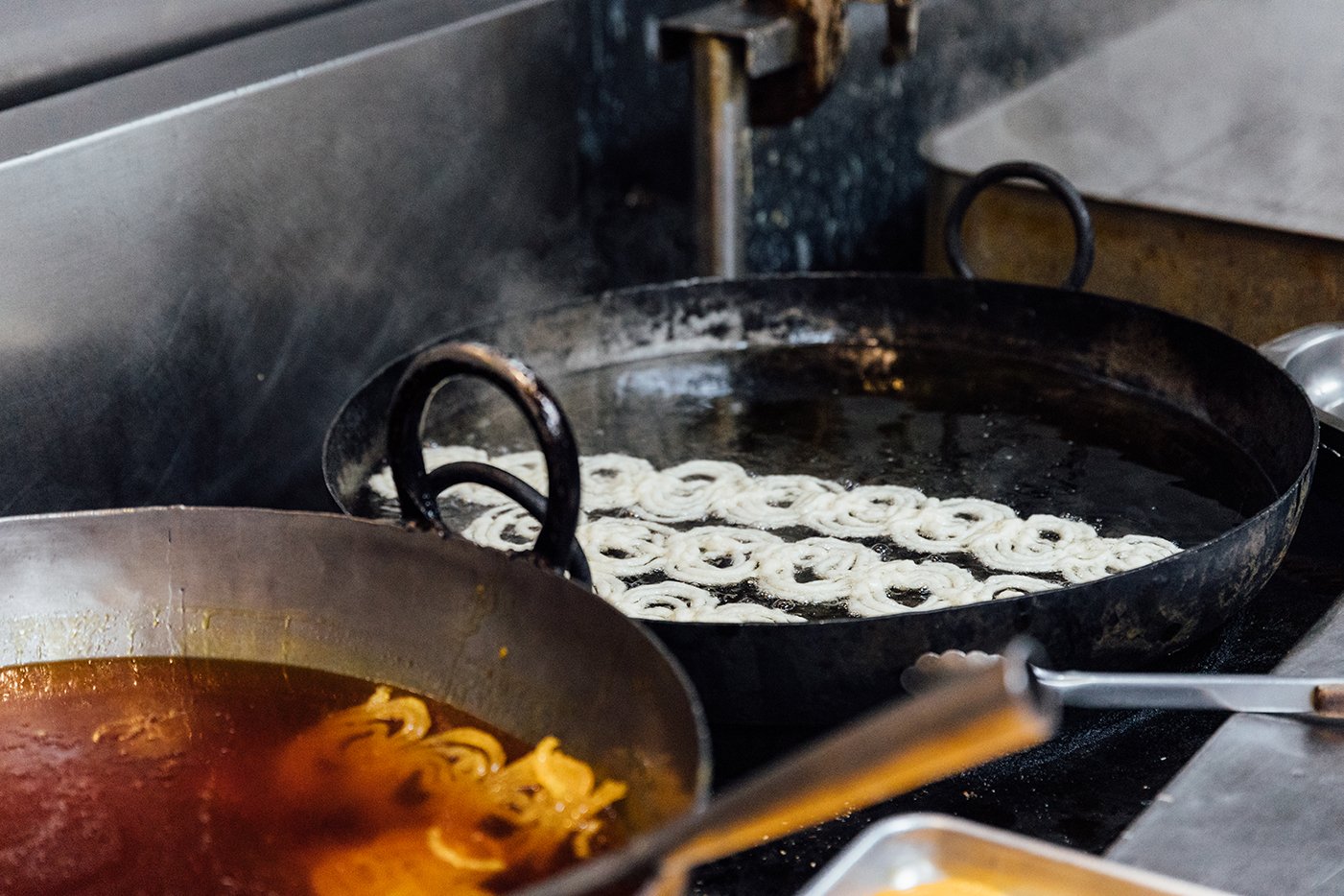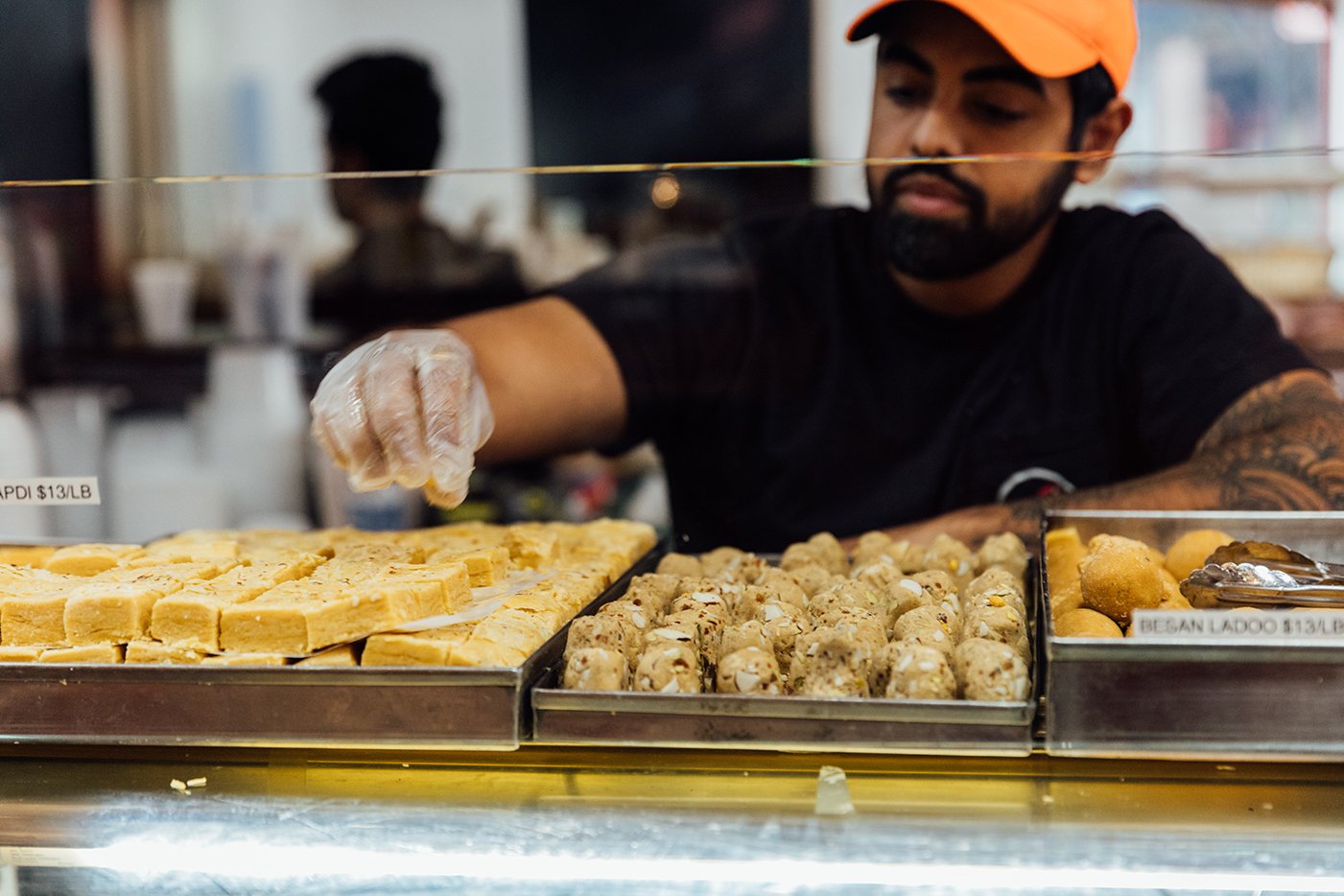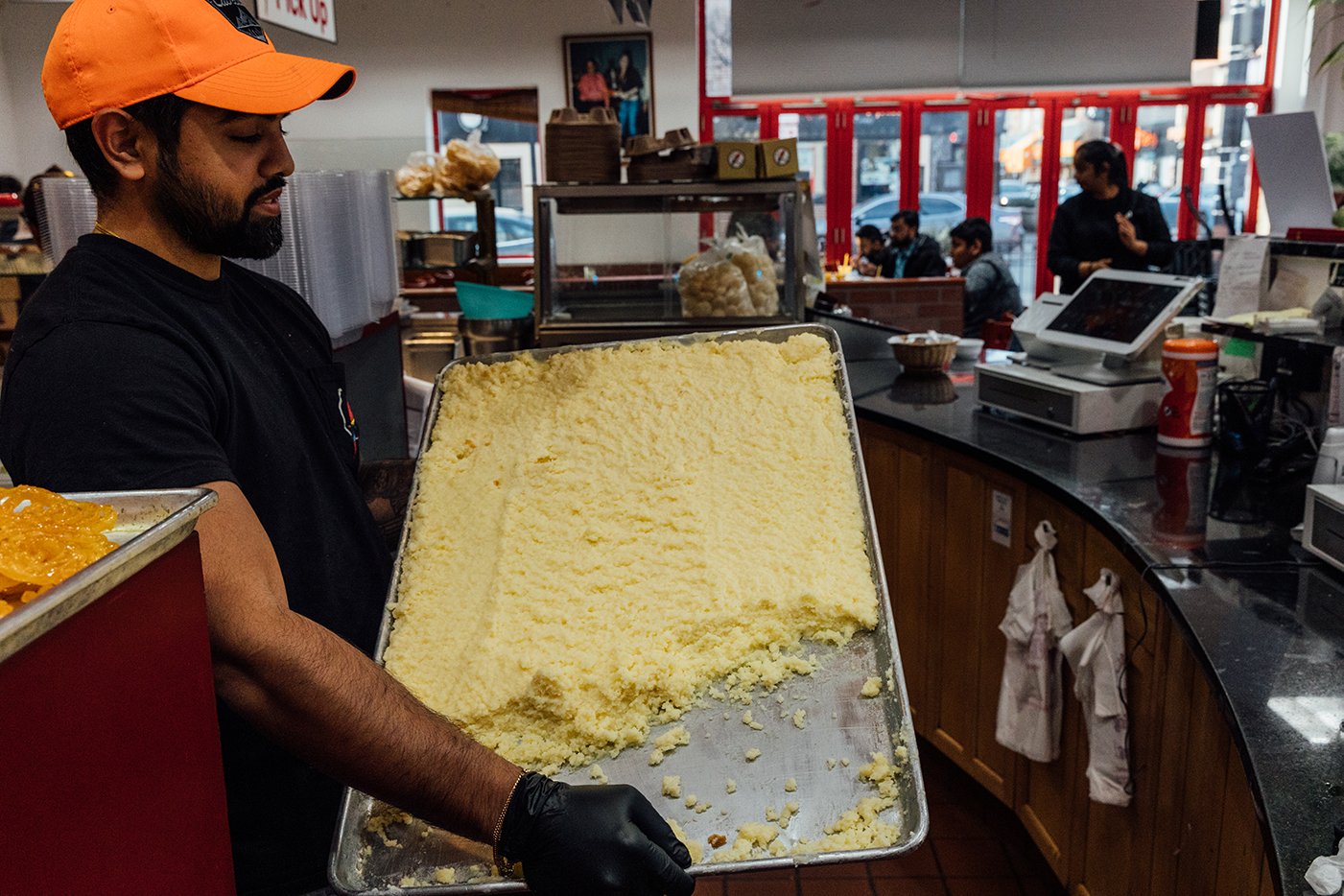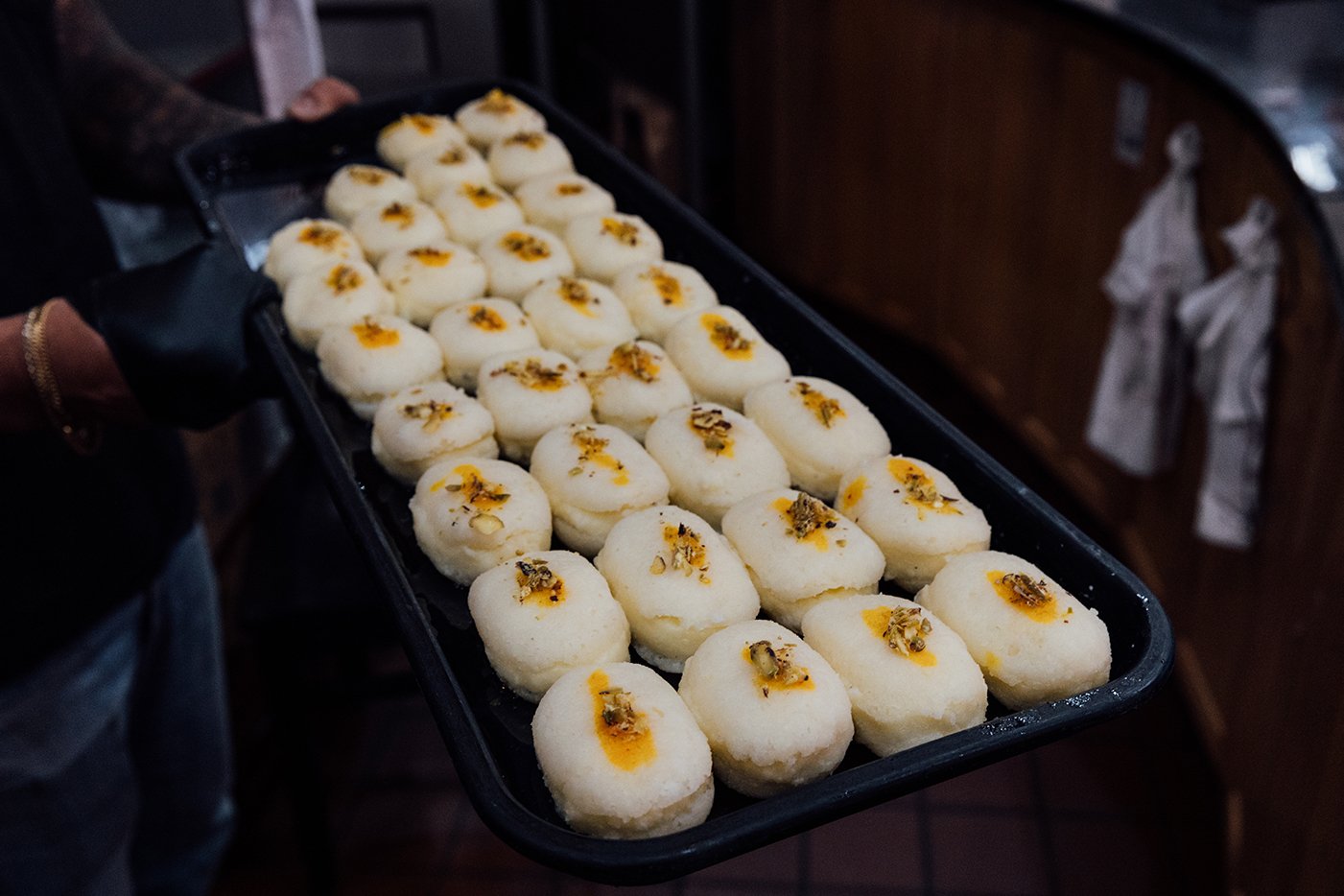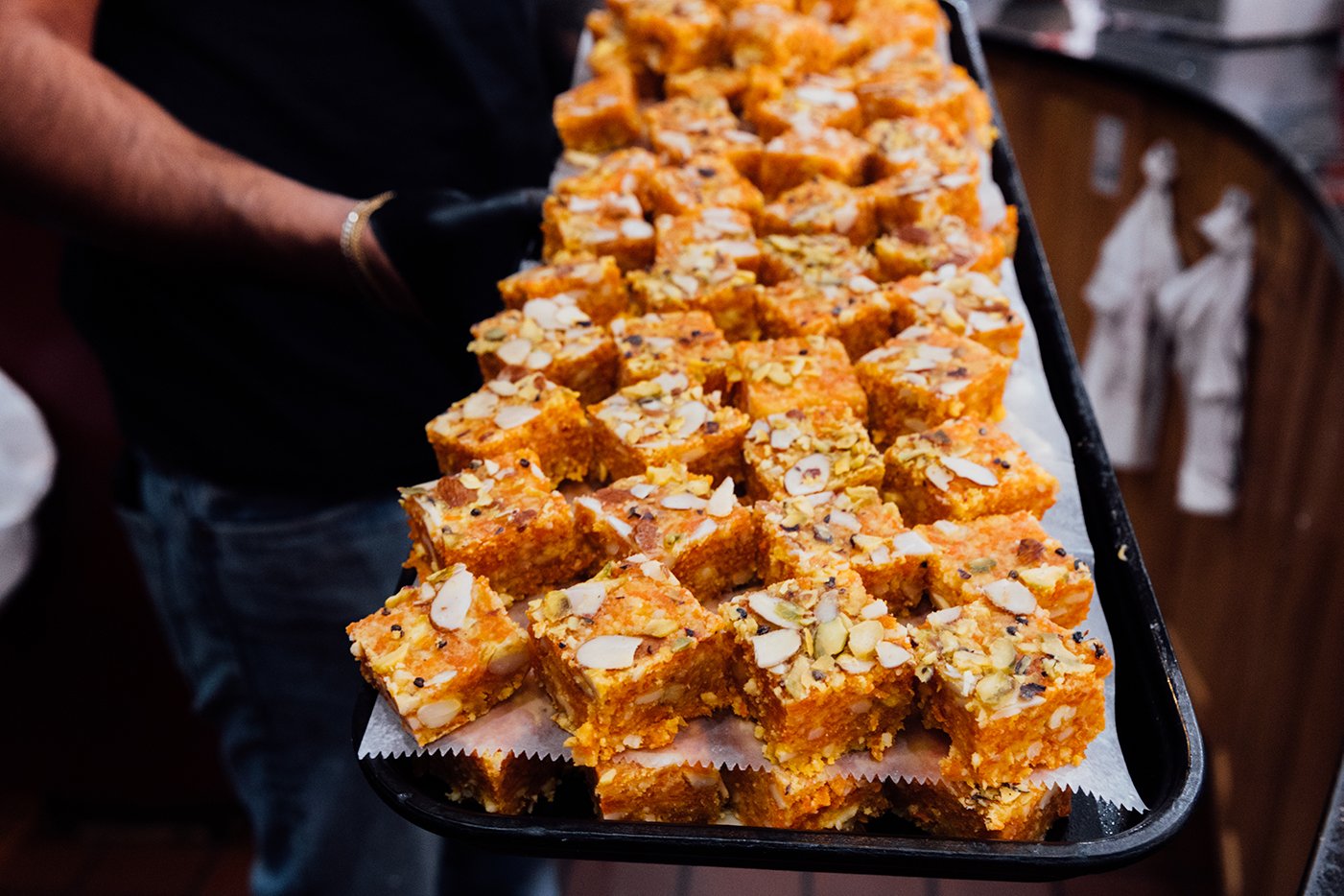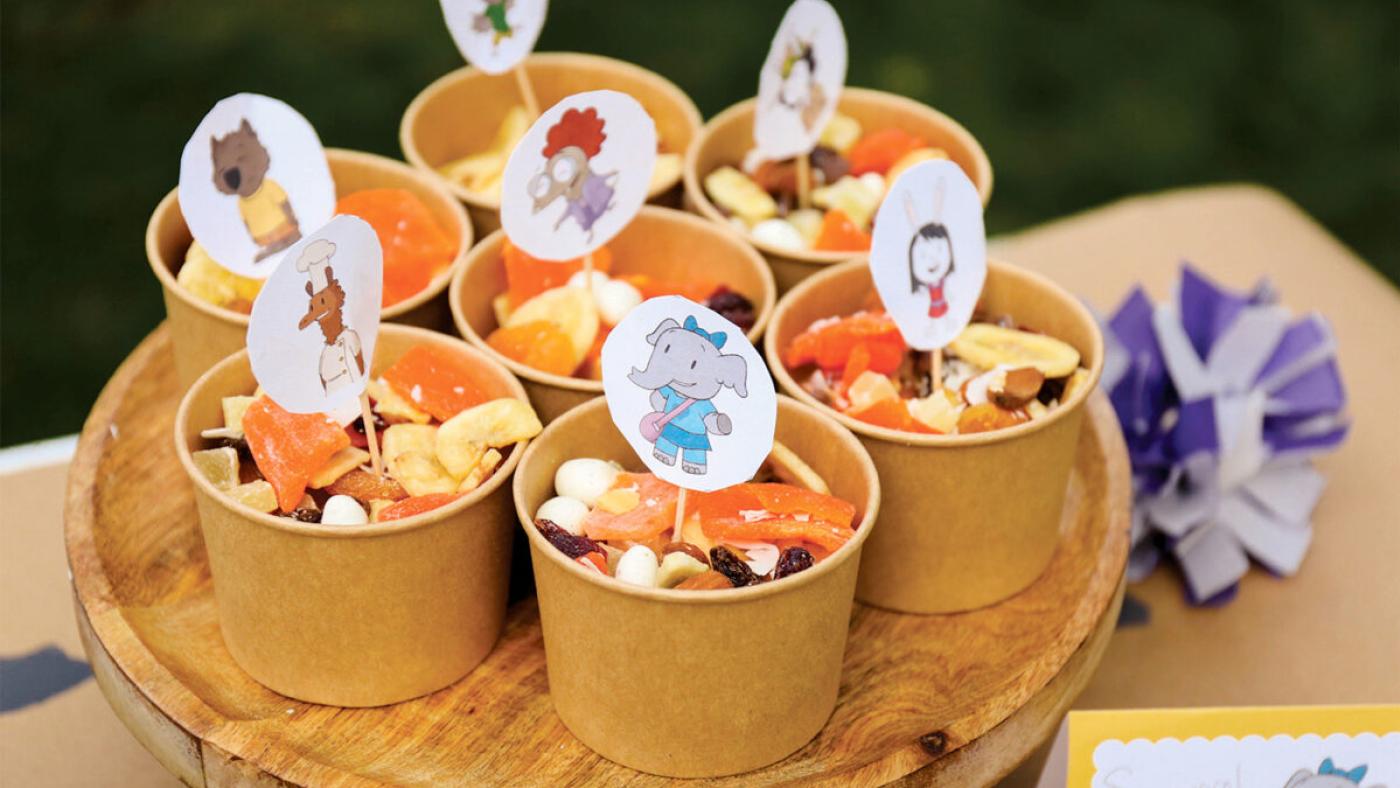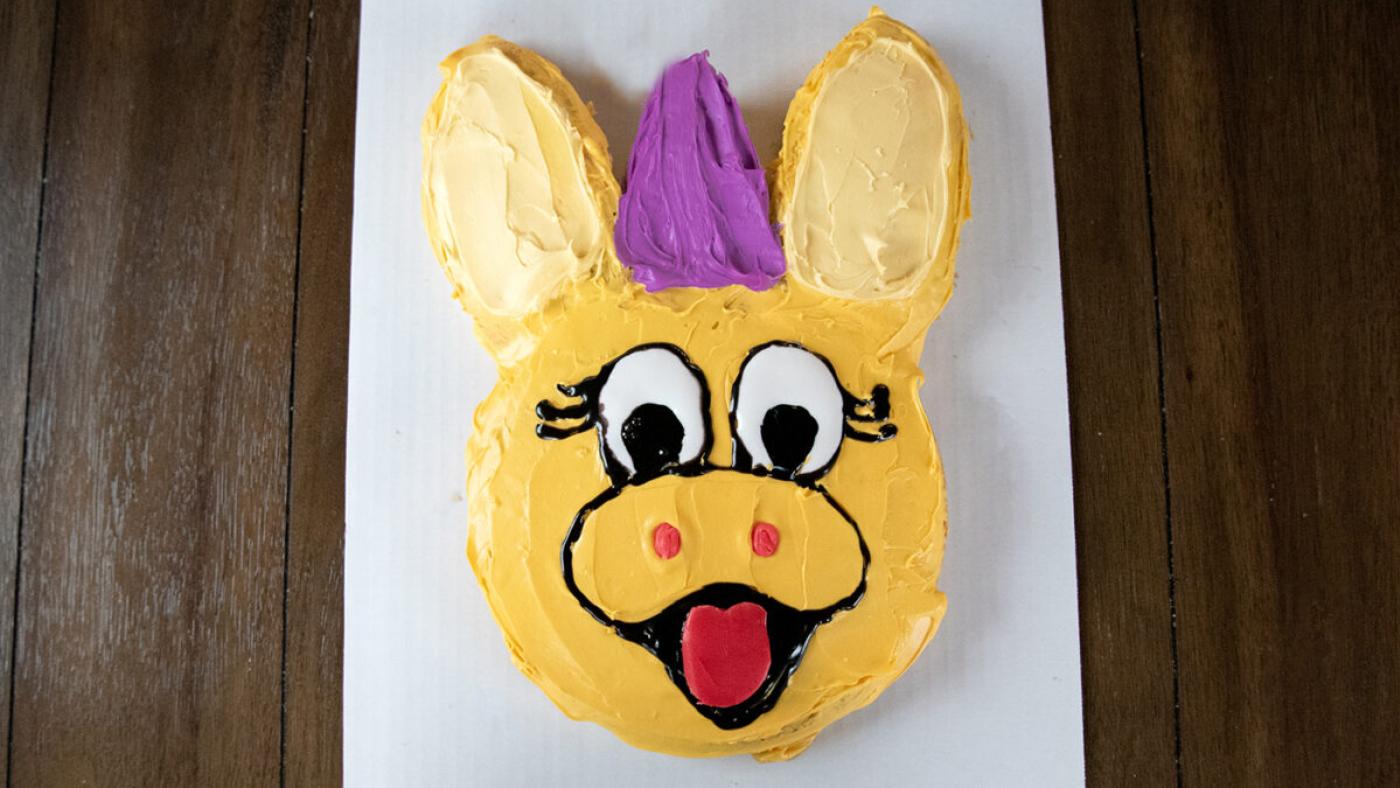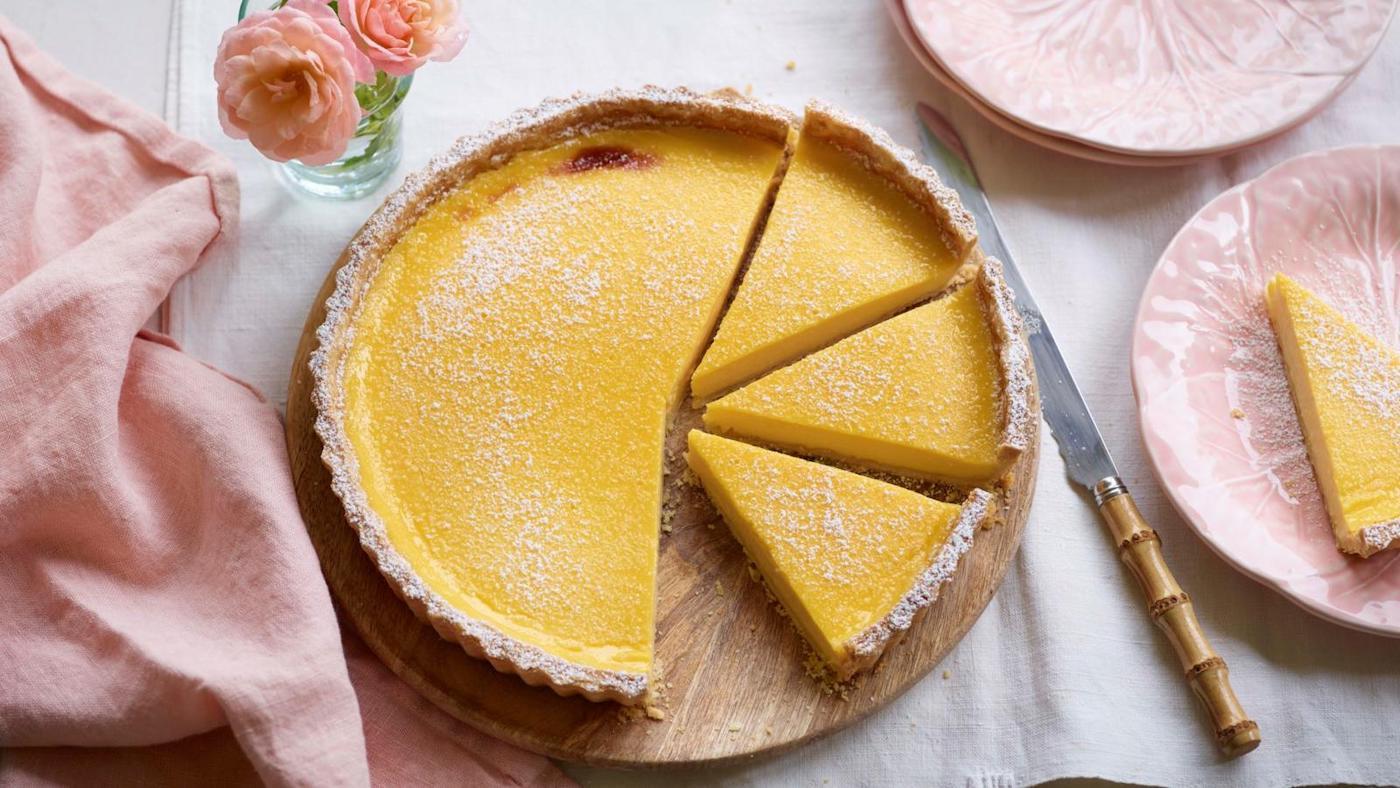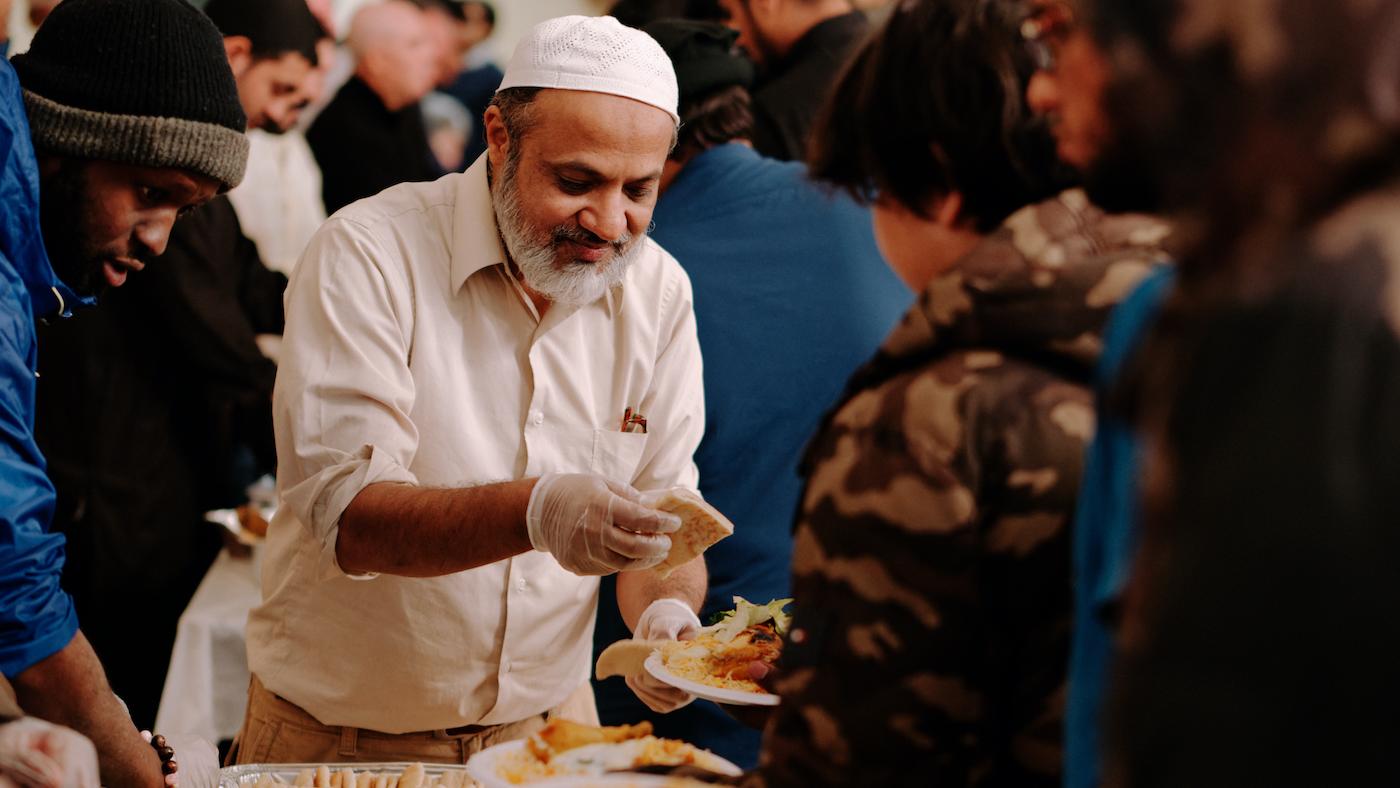A Guide to the Unique, Colorful World of Indian Sweets
Daniel Hautzinger
December 15, 2023
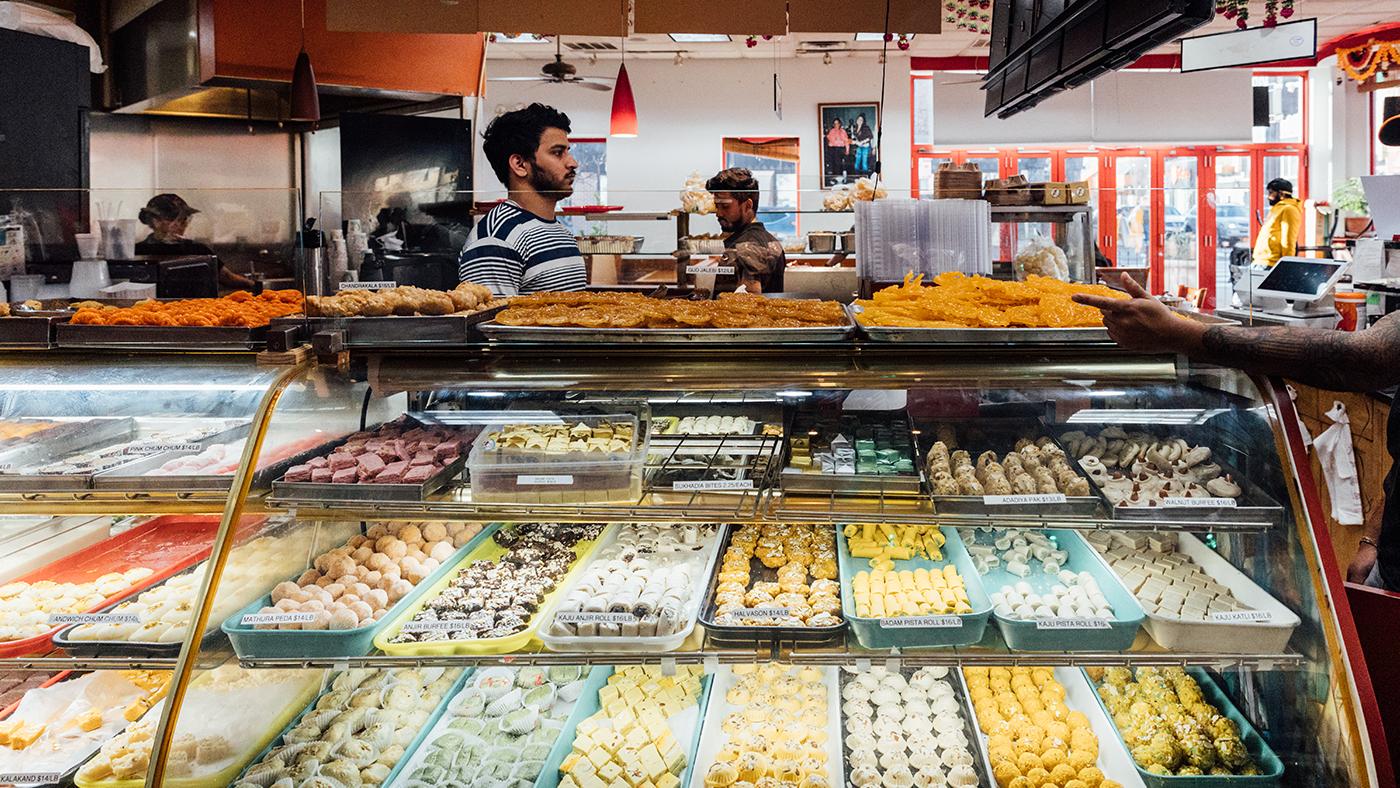
Get more recipes, food news, and stories by signing up for our Deep Dish newsletter.
If you’ve got a sweet tooth, you can thank India for sugar. Sugarcane is native to the country, where the grassy plant’s sweet juice was first refined into sugar. The English language still holds evidence of that history: “sugar” derives from the Sanskrit “sharkara” by way of Persian, Arabic, Latin, and French, showing the progress of the commodity across the globe, while “candy” likely comes from the Sanskrit “khanda,” for a piece of sugar.
Today, India is the world’s top producer of raw sugar, and the country consumes more sugar than any other. “In no other part of the world are sweets (Hindi mithai) as important as in India,” writes Colleen Taylor Sen in The Bloomsbury Handbook of Indian Cuisine. There are special mithai for various holidays, and they also mark rites of passage and happy occasions. When 41 workers were rescued after seventeen days trapped inside a collapsed tunnel in India last month, they were greeted by celebratory locals with sweets.
And yet the West is largely unfamiliar with the exciting world of mithai, which is as vast and varied as the Indian subcontinent itself and largely unlike anything found in other regions. Polychromatic treats trumpet flavors such as cardamom, rosewater, and mango, and are made from concentrated milk solids, chickpea batter, nuts, dried fruits, and more.
Chicagoans can get a taste of mithai at Sukhadia’s Sweets and Snacks in the city’s South Asian mecca on Devon Avenue. The shop has been there since 1995, expanding over the years, but its tradition of sweet-making goes back much further: the Sukhadias, the family behind it, have been making mithai for some 140 years.
“You know how back in the day there were Smiths who were blacksmiths? [It’s the same with] Sukhadia and sweet-maker,” says Sneh Sukhadia, one of the most recent generations to take up the trade.
His father, Jayant Sukhadia, opened the shop on Devon after immigrating to Chicago from the Indian state of Gujarat. Another part of the family has shops in New Jersey, while other relatives keep up the business back in India, all operating under the name Sukhadia’s and a colorful parrot emblem. “My great-great-grandpa was just like, ‘Let’s put a parrot,’” Sneh says of the obscure origins of the logo.
The Chicago Sukhadia’s offers some 60 varieties of mithai at a time. Other than a few imported from India, each is handmade in a labor-intensive process that has been used for generations, at both the store and a warehouse in Skokie. “We try to keep it as traditional as we should to get to the point of Indian sweets,” says Sneh.
For orange spirals of jalebi, that kind of detailed work involves allowing a wheat flour to ferment slightly by leaving it out (similar to sourdough). That batter is then extruded into hot oil in a coil shape and fried.
“You would think it’s easy, but it’s actually really difficult,” Sneh says of carefully forming the shape in the oil out of the liquidy batter. At Sukhadia’s, workers use a homespun implement – a can with a hole punched in the bottom – to pour the batter. A similar sweet, amarti, which is made out of lentil flour, has an even more complex floral shape consisting of shingled loops.
After frying, the jalebi is then soaked in a sugar syrup flavored with saffron and stained with a bit of yellow dye before being sold as a sort of Indian funnel cake.
Jalebi are one of the simpler mithai. Many others begin with a dairy base called mawa or khoya. Milk is slowly boiled down over several hours into a condensed, rich solid, sometimes in combination with sugar. “Making a mawa from scratch is very labor-intensive and also just takes a lot of time and money,” Sneh says.
While many families in India might make mithai at home for holidays like Diwali, the fall festival of lights that ushers in the Hindu new year, they often start from a premade mawa, according to the chef Jasmine Sheth of the Chicago retailer and caterer Tasting India. Sheth grew up in Mumbai, and has fond memories of making mithai with her mother’s “huge” family of eleven siblings around Diwali. “For me, that’s what Diwali means,” she says, “and mithai is the central part of this, because it is such a true labor of love. You make it and you give it to the people that you love, to really show them how much you care and pass on best wishes for the coming year.”
Plenty of Indians purchase mithai for Diwali, too: it is Sukhadia’s busiest time of year, when they do double or triple their typical business and sell an estimated three thousand to four thousand pounds of sweets over a week and a half, according to Sneh. But even in slower seasons like winter, Sukhadia’s has specialties such as adadiya pak, a crumbly, dense, warmly spiced mithai made from lentil flour that’s perfect for cold months in its savory sweetness.
Sheth also makes mithai and sells them through Tasting India at Diwali, offering the spherical motichoor laddoo – “made out of hundreds of little chickpea pearls that are soaked in a saffron syrup and combined into one big truffle” after being fried in ghee, in her words – and besan laddoo, “a toasted chickpea truffle that we drizzle with toasted white chocolate and rose petals” at Tasting India.
Besan laddoo is the most common version of laddoo, which is “perhaps the most universal and ancient of Indian sweets,” according to The Bloomsbury Handbook of Indian Cuisine. It is flavored with cardamom, which is one of the most common flavorings of mithai.
Cardamom is the main spice in penda, which is basically just mawa plus flavoring and has a texture and flavor close to white chocolate. (Given the linguistic diversity of India, most sweets have several names and English spellings; “penda” is the Gujarati variant of “peda.”) At Sukhadia’s, you can get malai penda, which incorporates a type of clarified cream called malai that can also be found inside a split, dairy-based dumpling in a sandwich chum chum.
Chum chum come from Bengal in the east of India, where sweets are revered and elevated to an art. “Stories are told about wealthy Bengali zamindars (rich landowners) of past centuries who ate nothing but sweets from morning to night,” writes Colleen Taylor Sen in an academic article on Bengali sweets. “This was seen as evidence not only of their wealth but their refinement, for an appreciation of the finer points of sweets has been viewed as a mark of a cultivated person.”
That anecdote reveals something else about Indian culture: sweets are generally not eaten as dessert after a meal except in Bengal, but rather on their own or with tea.
Bengali sweets often use a type of curd called chhana as their base, which is made by adding acid to heated milk, in a similar process to cheese-making. (The Indian cheese paneer, which is found in savory dishes, is made nearly the same way.)
“Bengali sweets are such an art, because it’s so difficult to make them and get it right,” Sheth says. “So we would generally buy it at a Bengali sweet store in Mumbai.”
Other Bengali sweets available at Sukhadia’s are rasgulla (chhana in a sugar syrup), and ras malai (chhana in that sweetened cream). “They’re soft and pillowy, and I just have really great memories of eating rasgulla with my uncles,” says Sheth.
Some mithai might appear similar but are prepared very differently and emerge with distinct textures and flavors. Gulab jamun is another sphere served in a syrup, although it is not Bengali and is made of deep-fried khoya and flour. Halwa is a whole category of slightly chewy squares often made from semolina that tend to be less dry and crumbly than Middle Eastern halva. Bombay halwa is gummy like a Turkish delight, while carrot halwa is softer and contains mawa along with carrots cooked in ghee. Burfee or barfi are fudgy squares incorporating mawa flavored with everything from coconut to chocolate to mango. Kaju katli, one of the more popular sweets, is a form of burfee cut into rhombuses (katli) and incorporating ground cashews (kaju), which are the base of various other mithai.
“It’s really hard to find good quality mithai in stores [in America],” Sheth says. “Making mithai is such a special art; I would even equate it to the art of French patisserie. You have to have spent years trying to perfect the recipes and the methodologies.”
Sneh’s father Jayant is someone who has spent those years. He still experiments with mithai and flavorings; Sneh recalls him once making an unbearably spicy samosa filling. (Sukhadia’s sells some savory food as well as house-made snack mixes.) Sneh himself is continuing to learn the business and the art, having joined his parents in running the store five years ago. He’s slowly introducing his own changes, but Sukhadia’s remains a traditional family business.
And the mithai retain an ability to connect people and conjure memories of a home country that has been left behind. “Some of [Sukhadia’s sweets] really take me back to growing up and eating laddoos with my friends and my family,” Sheth says. “It’s always a special treat to go back there.”

